
OtGO photo for Presse


www.youtube.com/@otgo
- Biographie en français
- Намтар Монгол хэлээр
- Biography in English
- Biografie auf Deutsch
- Biografia w języku polskim
- Biografija lietuvių kalba
OtGONBAYAR Ershuu M.A.
Since 2018, he has been working on a voluntary basis as "Chief Curator and External Affairs of The National Art Gallery of Mongolia" parallel to his artistic work.
OtGO is Artist/Painter, Art Historian, Curator, Collector, Autor

OtGO Photo for presse 2013 Mongolia
'Roaring Hoofs-30' by OTGO 2012-2013, acryl on canvas, 720 x 440 cm, Best Western Premier Tuushin Hotel, Ulaanbaatar, Mongolia
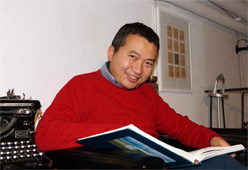
OtGO Photo for presse (Photo by Heinz Schuster) 2018 Berlin

Contes sur l'infini
Château des ducs de Bretagne
Musée d’histoire de Nantes, France 2024

Contes sur l'infini
Château des ducs de Bretagne
Musée d’histoire de Nantes, France 2024

OTGO RETROSPECTIVE
The Boesch Museum, France 2024

OTGO RETROSPECTIVE
The Boesch Museum, France 2024

Inside the Studio OtGO

'HUNNEN' Solo Show COVA Art Gallery
Eindhoven, Netherlands 2022

«UNENDLICH» Solo Exhibition
KUNSTVEREIN KONSTANZ Germany 2019

«UNENDLICH» Solo Exhibition
KUNSTVEREIN KONSTANZ Germany 2019

OtGO Retrospektive
MONGOLIAN NATIONAL MODERN ART GALLERY
Ulaanbaatar, Mongolia 2018

OtGO art collection berlin 2023

ABU DHABI ART 2017 Modern. Contemporary. Art Fair
Abu Dhabi, United Arab Emirates 2017
Gallery AB43 CONTEMPORARY. Switzerland

Inside the Studio OtGO

Inside the Studio OtGO

«UNENDLICH» Solo Exhibition
KUNSTVEREIN KONSTANZ Germany 2019

OtGO Mongolia www.otgo.info

OtGO Berlin www.otgo.info

Inside the Studio OtGO

Inside the Studio OtGO
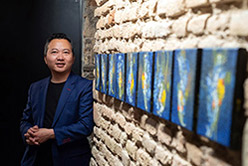
OtGO Solo Show 'AMITAN' – GODÒ Gallery Vilnius, Lithuania
photo by Jurgita Kunigiskyte 2024

Inside the Studio OtGO

OtGO Beelitz Germany

Inside the Studio OtGO

OtGO 2022 photo by Arkhad Pictures

OtGO Basel, Switzerland

'HUNNEN' Solo Show COVA Art Gallery
Eindhoven, Netherlands 2022

Prof. Heinz & OtGO Berlin

"HUN" by OtGO 217 x 660 cm, acryl on canvas, 201 -2012

Inside the Studio OtGO

OtGO Retrospektive
MONGOLIAN NATIONAL MODERN ART GALLERY
Ulaanbaatar, Mongolia 2018

VÉGTELEN ‚INFINITE’ SOLO OtGO SHOW
Józsefvárosi Galéria, Budapest, Hungary 2020

«UNENDLICH» Solo Exhibition
KUNSTVEREIN KONSTANZ Germany 2019

«UNENDLICH» Solo Exhibition
KUNSTVEREIN KONSTANZ Germany 2019

Inside the Studio OtGO photo by Anna Wyszomierska

Inside the Studio OtGO photo by Anna Wyszomierska

"HUN = Menschen" solo-exhibition
Museum Baruther Glashütte, Germany 2014

OtGO National University of Mongolia 2018

OtGO A 24 Years Survey Exhibition
Muzeum Historyczne Skierniewic Poland 2022
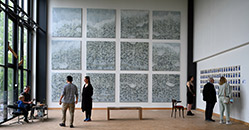
Inside the Studio OtGO
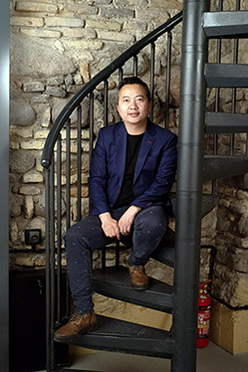
OtGO Solo Show 'AMITAN' – GODÒ Gallery Vilnius, Lithuania
photo by Jurgita Kunigiskyte 2024

Inside the Studio OtGO
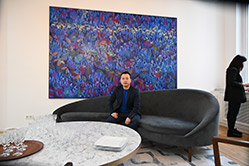
OtGO Berlin 2020

VÉGTELEN ‚INFINITE’ SOLO OtGO SHOW
Józsefvárosi Galéria, Budapest, Hungary 2020
Inside the Studio OtGO

Inside the Studio OtGO

«UNENDLICH» Solo Exhibition
KUNSTVEREIN KONSTANZ Germany 2019

OtGO A 24 Years Survey Exhibition
Muzeum Historyczne Skierniewic Poland 2022

OtGO Galerie Peter Zimmermann
Mannheim, Germany 2014

Inside the Studio OtGO

OtGO Retrospektive
MONGOLIAN NATIONAL MODERN ART GALLERY
Ulaanbaatar, Mongolia 2018

OtGO Switzerland 2019 photo by Arkhad Pictures

«ZURAG» – Solo Exhibition
AB43 CONTEMPORARY Switzerland 2018

Inside the Studio OtGO

Inside the Studio OtGO

Inside the Studio OtGO

Inside the Studio OtGO

OTGÖSCHENEN Cathedral
Kunstdepot Göschenen Uri Switzerland 2023

OTGÖSCHENEN Cathedral
Kunstdepot Göschenen Uri Switzerland 2023

OtGOgreen Holland 2023

Inside the Studio OtGO

VÉGTELEN ‚INFINITE’ SOLO OtGO SHOW
Józsefvárosi Galéria, Budapest, Hungary 2020

Inside the Studio OtGO

«UNENDLICH» Solo Exhibition
KUNSTVEREIN KONSTANZ Germany 2019

Inside the Studio OtGO

Inside the Studio OtGO

Inside the Studio OtGO

Inside the Studio OtGO

Inside the Studio OtGO

Inside the Studio OtGO

OtGO Berlin

'HUNNEN' Solo Show COVA Art Gallery
Eindhoven, Netherlands 2022
photo by Chloé Alyshea

'HUNNEN' Solo Show COVA Art Gallery
Eindhoven, Netherlands 2022
photo by Chloé Alyshea

Terbishdagva & OtGO Studio
Д.Тэрбишдагва Э.Отгонбаяр хоёрын уулзалт ярилцлага – Берлин хотод байдаг ОТГО урлангуудаар зочлов.

OtGO www.otgo.info

The Rotifers by OtGO 2020-2023 Berlin Studio
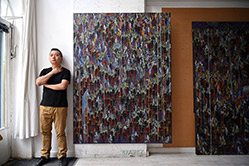
Inside the Studio OtGO

Inside the Studio OtGO

Inside the Studio OtGO

«UNENDLICH» Solo Exhibition
KUNSTVEREIN KONSTANZ Germany 2019
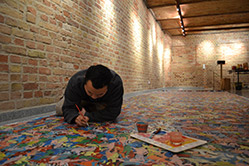
Inside the Studio OtGO

«UNENDLICH» Solo Exhibition
KUNSTVEREIN KONSTANZ Germany 2019

«UNENDLICH» Solo Exhibition
KUNSTVEREIN KONSTANZ Germany 2019

VÉGTELEN ‚INFINITE’ SOLO OtGO SHOW
Józsefvárosi Galéria, Budapest, Hungary 2020

Inside the Studio OtGO

Inside the Studio OtGO

Inside the Studio OtGO
